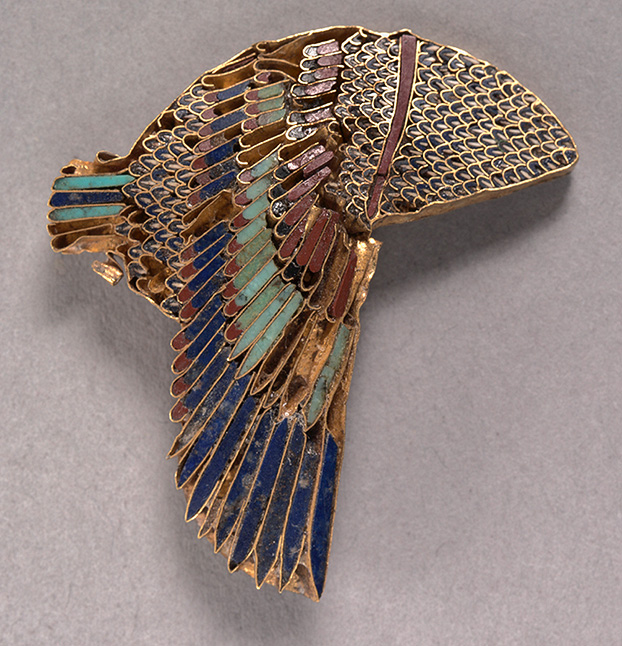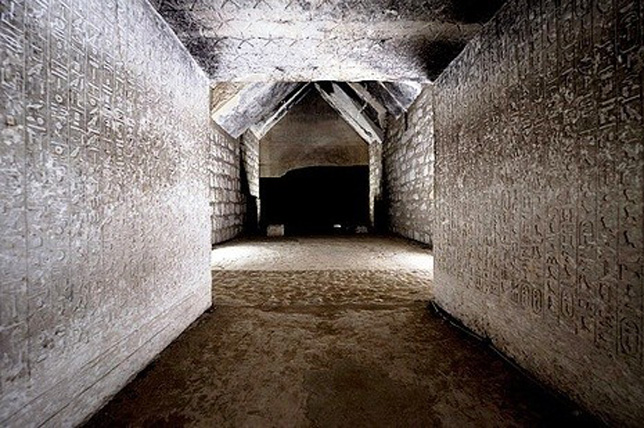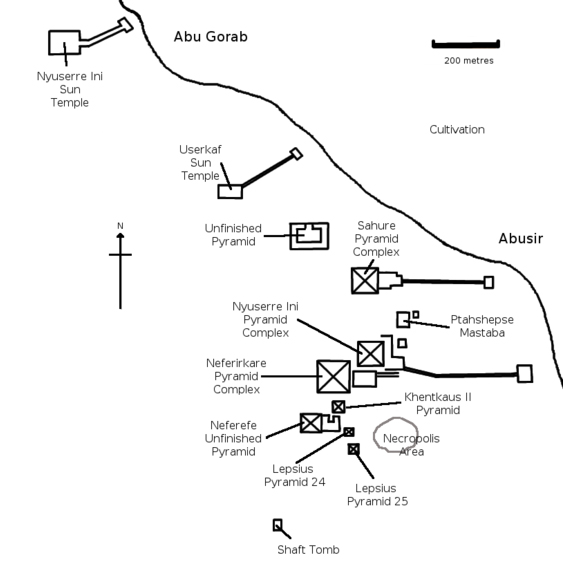Madain Project
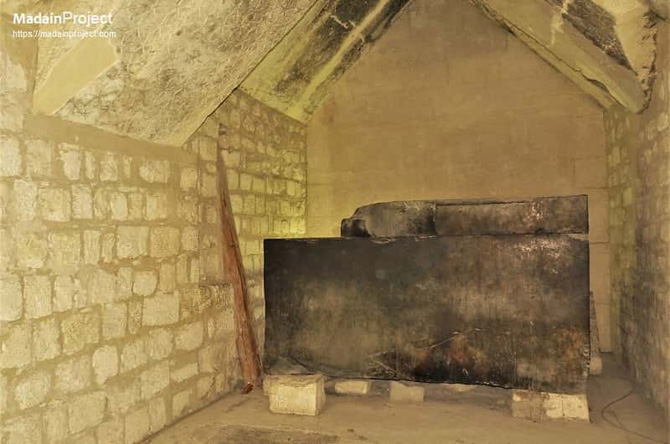
The burial chamber contains an unfinished greywacke sarcophagus, a fragment of a lid and a canopic container that is nothing more than a simple hole in the ground. And for the first time, a royal sarcophagus contains inscriptions, here slightly etched on the hollow interior of the vessel. The burial chamber and the antechamber are covered with huge vaulted rafters. The walls of the burial chamber and the antechamber are covered with hieroglyphic inscriptions commonly called the Pyramid Texts.
Saqqara

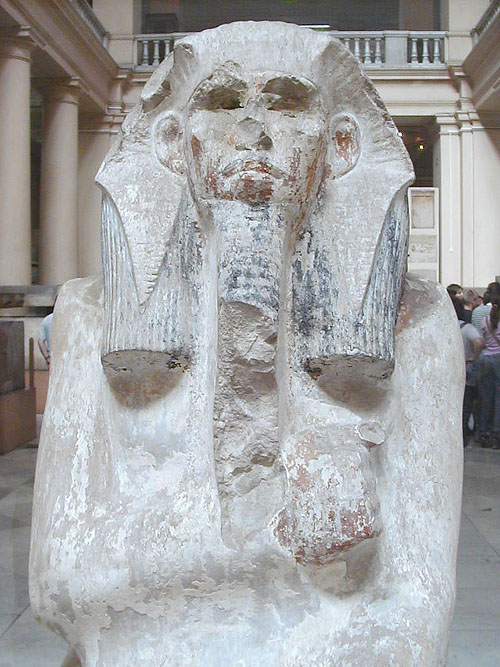
The painted limestone statue of Djoser, now in the Egyptian Museum in Cairo, is the oldest known life-sized Egyptian statue. Today, at the site in Saqqara where it was found, a plaster copy of it stands in place of the original. The statue was discovered during the Antiquities Service Excavations of 1924–1925.
Neferirkare Kakai, Third King of the Old Kingdom 5th Dynasty
Papyrus found in his pyramid complex were written in ink and are the earliest known documents in hieratic script, a cursive form of hieroglyphics.
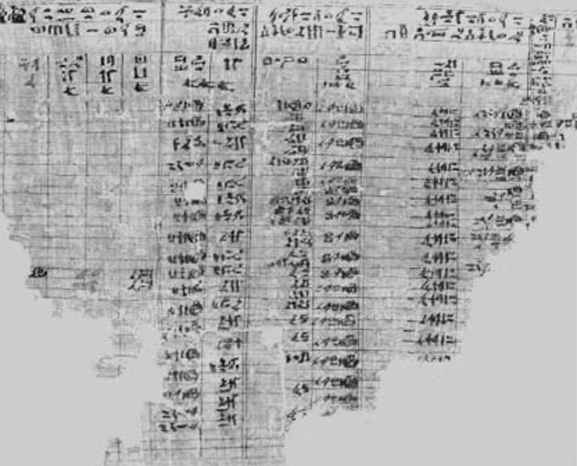
The hieratic papyrus found at his pyramid complex are probably his most notable contributions to Egyptology. They were originally discovered in 1893 by local farmers and consist of 300 papyrus fragments. They remained unpublished for some seventy-five years, even as the first archaeologists were excavating Abusir.
The Neferirkara archive reveals a world of detailed and very professional administration. Elaborate tables provide monthly rosters of duty: for guarding the temple, for fetching the daily income (or 'offerings') and for performing ceremonies including those on the statues, with a special roster for the important Feast of Seker. Similar tables list the temple equipment, item by item and grouped by materials, with details of damage noted at a monthly inspection. Other records of inspection relate to doors and rooms in the temple building. The presentation of monthly income is broken down by substance, source and daily amount. The commodities are primarily types of bread and beer, meat and fowl, corn and fruit.
Dec. 12, 2019
Rare pink statue of Ancient Egyptian king unearthed near pyramids of Giza
The statue was unearthed during excavations at a private plot in the village of Mit Rahina about 20 miles south of Cairo. The artfact depicts Ramses II who ruled Egypt from 1279 to 1213 BC wearing a wig and crown.
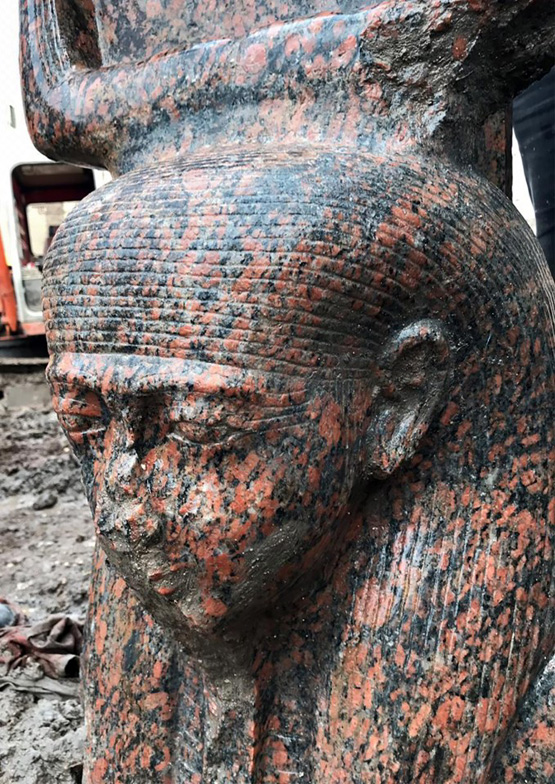
Saqqara
The burial chamber contained a black basalt sarcophagus, which was intact when it was discovered and even its lid, although pushed back, was mainly unbroken. The mummy that was discovered inside this sarcophagus is held by some to have been Merenre I himself, alhough it is more likely that it belonged to an 18th Dynasty intrusive burial.
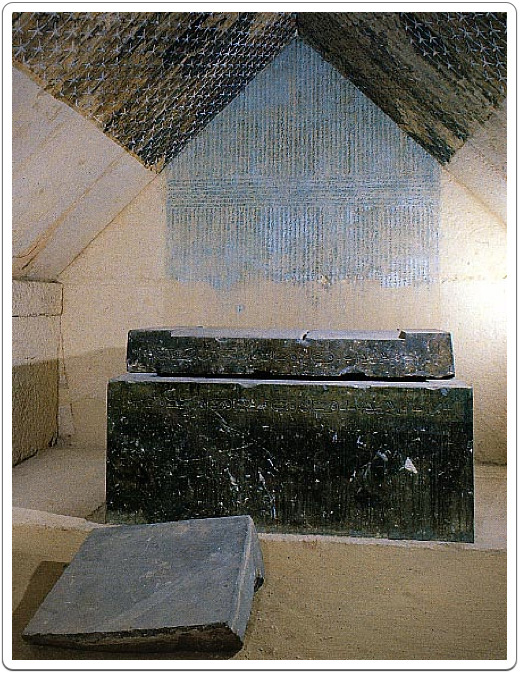
Saqqara
Abusir is an ancient Egyptian archaeological pyramid complex comprising the ruins of four Pharaoh's pyramids dating to the Old Kingdom period and is part of the Pyramid Fields of the Memphis and its Necropolis.
The locality of Abusir took it's turn as the focus of the prestigious western burial rites operating out of the then-capital of Memphis during the Old Kingdom 5th Dynasty. As an elite cemetery, neighbouring Giza had by then "filled up" with the massive pyramids and other monuments of the 4th Dynasty, leading the 5th Dynasty pharaohs to seek sites elsewhere for their own funerary monuments.
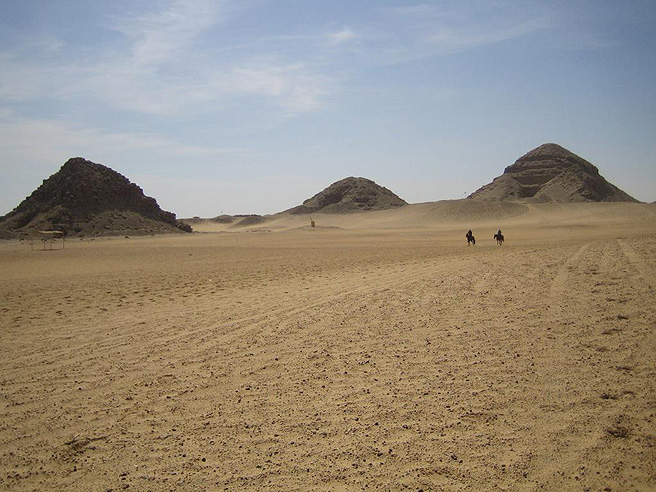
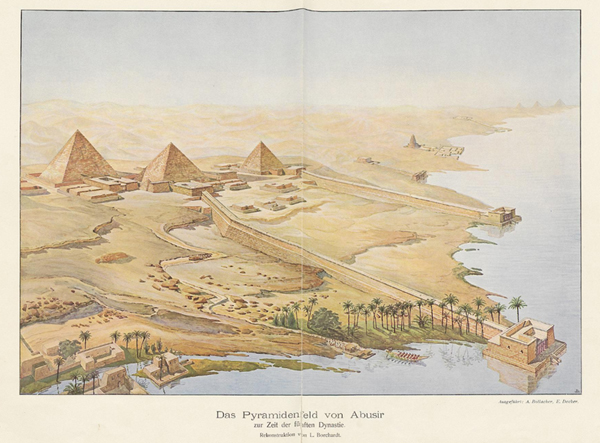
A painting by A. Bollacher and E. Decker depicting the pyramids of Neferirkare Kakai (left), Nyuserre Ini (middle) and Sahure (right). Further in the background the figures of sun temples can be made out. In the very far background, three other pyramids can be detected. (1907)
Abusir
Abusir
The pyramid of Sahure is a pyramid complex built in the late 26th to 25th century BC for the Egyptian pharaoh Sahure of the Fifth Dynasty. It introduced a period of pyramid building by Sahure's successors in Abusir, on a location earlier used by Userkaf for his sun temple.
Stone fragments believed to belong to the king's basalt sarcophagus are the only remains of the burial that have been found.
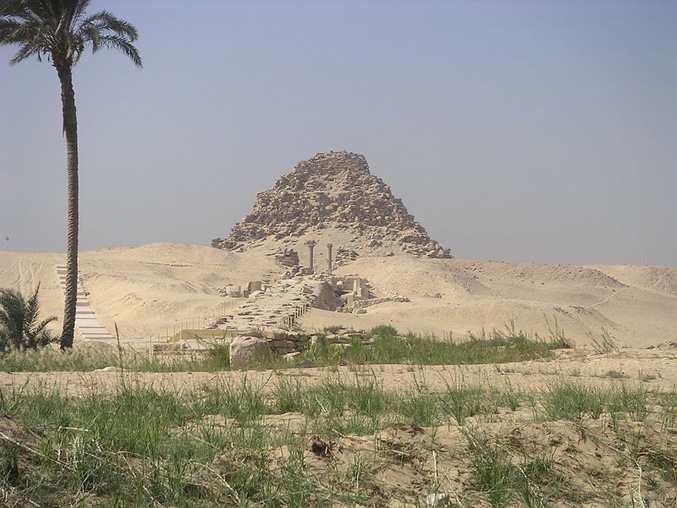
The reopening of the Unas pyramid is part of a larger plan of the Egyptian Ministry of Antiquities to open more archaeological sites to attract tourists.
‘’We’re planning to make other sites at the Abusir necropolis accessible to the public, like the tomb of Vizier Ptahshepses, the pyramids of Sahura and Neferirkare,’’ said Sabry Farag, director of the Saqqara and Abusir necropolis sites.
The Pyramid Texts are the oldest ancient Egyptian funerary texts, dating to the late Old Kingdom. They are the earliest known ancient Egyptian religious texts. Written in Old Egyptian the pyramid texts were carved onto the subterranean walls and sarcophagi of pyramids at Saqqara from the end of the Fifth Dynasty and throughout the Sixth Dynasty of the Old Kingdom and into the Eighth Dynasty of the First Intermediate Period. The oldest of the texts have been dated to c. 2400–2300 BC.
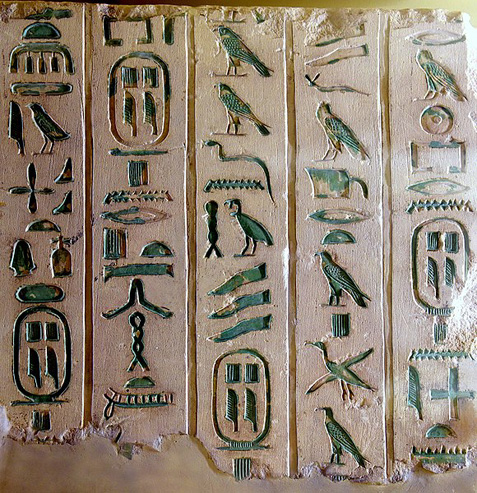
| Cartouches of Pepi I and Pyramid Texts. Limestone block fragment from the debris of the north wall of the antechamber within the pyramid of Pepi I at Saqqara. |

|
Pyramid Text inscribed on the wall of a subterranean room in Teti's pyramid at Saqqara Unlike the later Coffin Texts and Book of the Dead, the Pyramid Texts were reserved only for the pharaoh and were not illustrated.
|
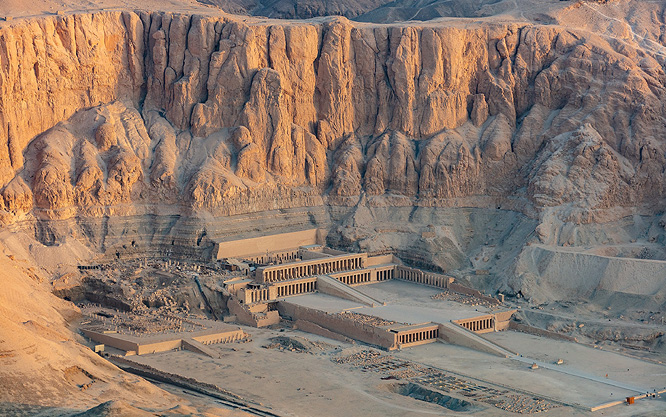
Memphite Necropolis aka Pyramid Fields
It includes the pyramid complexes of Giza, Abusir, Saqqara and Dahshur, and is listed as the UNESCO World Heritage Site of Memphis and its Necropolis. Most of the pyramids of the Old Kingdom were built here along with many mastabas and other tombs.
Saqqara is the site of the first Egyptian pyramid, the Pyramid of Djoser and thus the first pyramid field in the Memphite Necropolis, established in the 27th Century BC during the Third Dynasty with another 16 pyramids built over the centuries though the Fifth Dynasty. However, the site was used for burials at least as early as the First Dynasty ca. 32nd Century BC and remained in almost continuous use as a cemetery for 3000 years until the Ptolemaic Period 30 BC.
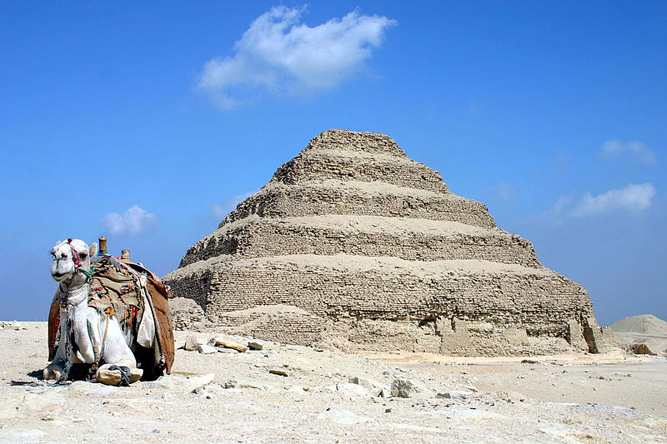
Dahshur is an ancient Egyptian pyramid complex and necropolis. It is known chiefly for several pyramids, mainly Senefru's Bent Pyramid and the Red Pyramid which are among the oldest, largest and best preserved in Egypt, built from 2613 to 2589 BC.
The Red Pyramid was the third pyramid built by Old Kingdom Pharaoh Sneferu and was built 2575–2551 BC.
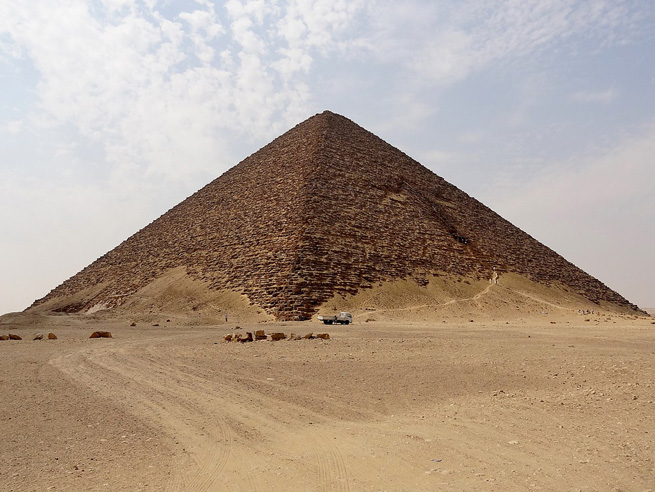
The Red Pyramid is the largest of the pyramids located at the Dahshur necropolis. It is believed to be Egypt's first successful attempt at constructing a "true" smooth-sided pyramid.
The earliest stone sarcophagi were used by Egyptian pharaohs of the 3rd dynasty which reigned from about 2686 to 2613 .C.
Sekhemkhet's pyramid is sometimes referred to as the "Buried Pyramid
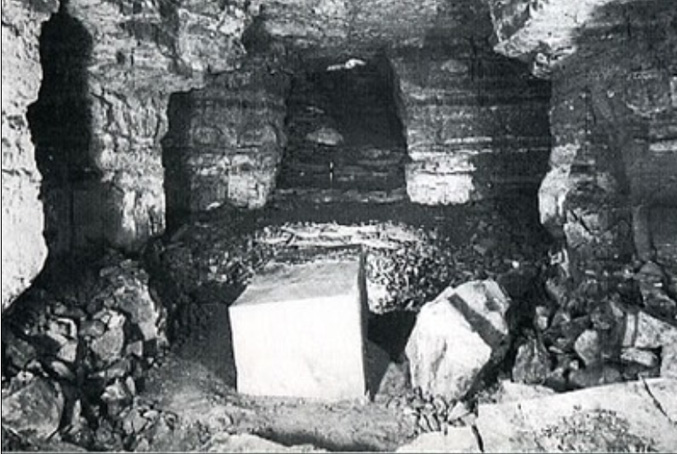
Mysterious ‘Sarcophagus’ of Sekhemkhet said to have been carved from one solid block of ‘Egyptian alabaster’ with sliding door. Dated from 2649 – 2643 BC
"In the middle of a rough-cut chamber lay a magnificent sarcophagus of pale, golden, translucent alabaster" under the Sekhemkhet Pyramid at Saqqara.” The only opening was sliding panel at one end, slid into position from the top.
When found in 1954 the box was completely sealed--and no body was found inside. The pyramid was so named because they found the title "Sekhemkhet" on the lids of jars found at the same location.
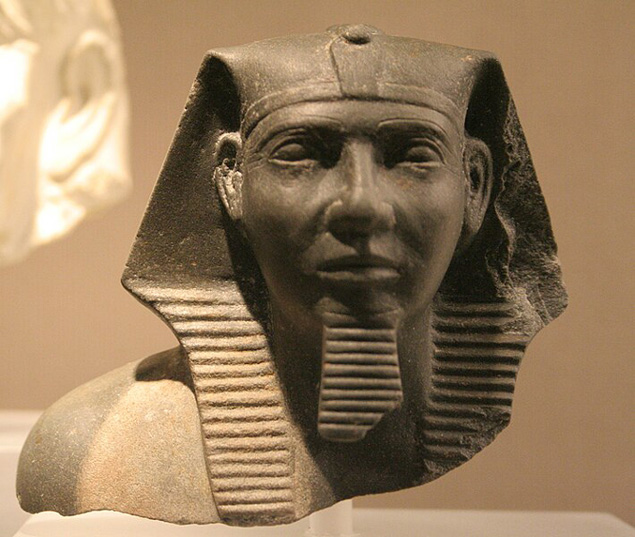
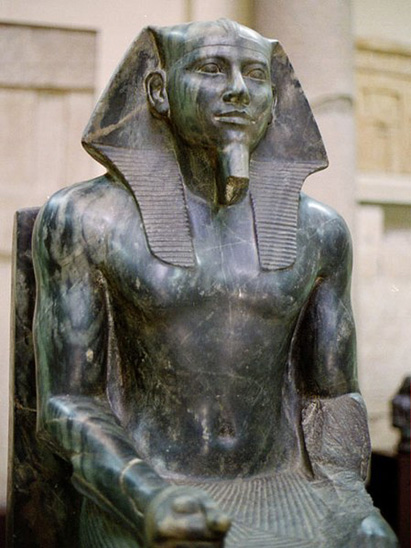
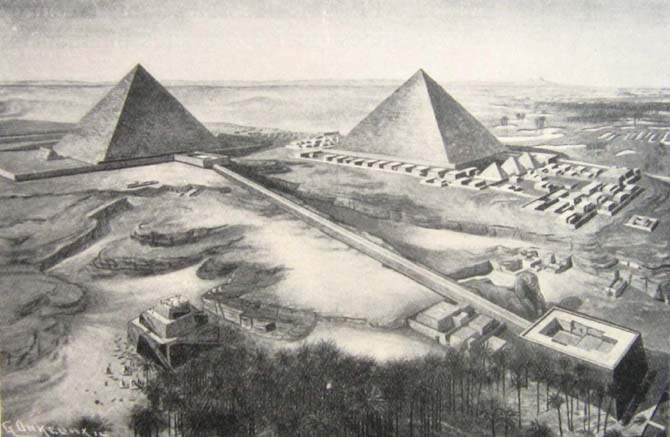
Drawing of Khafre's pyramid complex. A causeway connected the Valley Temple (bottom-right) to the Pyramid Temple (top-left). Photo taken in 1910.
Hotepsekhemwy is the Horus name of an early Egyptian Pharaoh who was the founder of the Second Dynasty of Egypt.
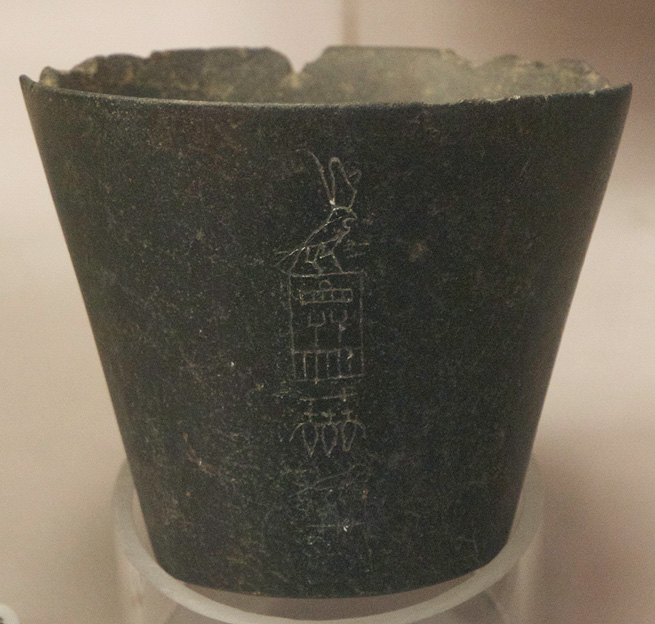
Giovanni Belzoni, 1778 – 1823 was a prolific Italian explorer and pioneer archaeologist of Egyptian antiquities. He is known for his removal to England of the 7-ton bust of Ramesses II, the clearing of sand from the entrance of the great temple at Abu Simbel, the discovery and documentation of the tomb of Seti I including the sarcophagus of Seti I and the first to penetrate into the Pyramid of Khafre, the second pyramid of the Giza complex.

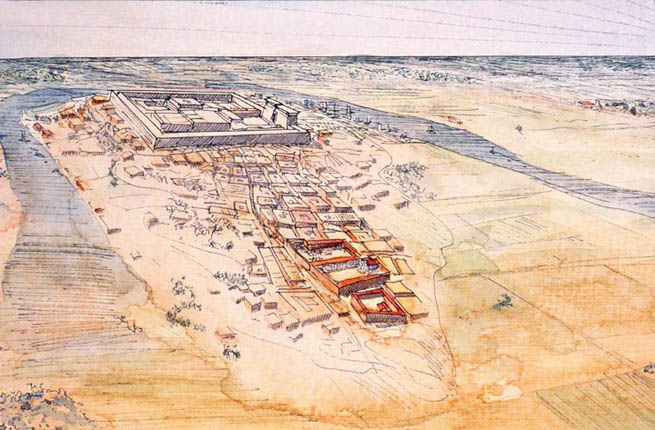
Beneath a lake lies the ruins of the city of Naukratis, a Greek-founded city, which served as a trading port somewhere around 620 BC.
100–1 BC
The 32nd century BC lasted from the year 3200 BC to 3101 BC. That’s about 5,200 years ago
The Forgotten City Beneath Egypt
A short tale about the lost city of Naukratis of Greek origin drowned beneath the Nile
Sunken Egypt
Heracleion
Canopus
The Sphinx of Memphis is a stone sphinx located near the remains of Memphis, Egypt. The carving was believed to take place between 1700 and 1400 BC, which was during the 18th Dynasty. It is unknown which pharaoh is being honored and there are no inscriptions to supply information. The facial features imply that the Sphinx is honoring Hatshepsut or Amenhotep II or Amenhotep III.
It’s 26 feet/8 meters long and 13 feet/4 meters high.
It’s carved from Calcite and is the largest Calcite statue in the world. It’s the only Sphinx with the curious striations or lines on it which you can see in the closeup.
Great
Sphinx of Tanis
The Louvre Museum’s Egyptian Department contains over 50,000
pieces housed in 20 rooms. Here’s one of them: The Great
Sphinx of Tanis, from 2000 BC, which is one of the largest sphinxes
outside of Egypt. Found in 1825 among the ruins of the Temple
of Amun at Tanis (the capital of Egypt during the 21st and 22nd
dynasties), it’s inscribed with the names of the Pharaohs
Ammenemes II (1929-1895 BC), Merneptah (1212-02 BC) and Shoshenq
I (945-24 BC).
The restoration took place on the grounds of the Crystal Palace
in Sydenham Hill, London, which you can see in the old photograph.
Many people think the Great Sphinx is from 12,000 years ago and from a lost civilization but then why are there similar Sphinxes like this that a smaller size in other major locations like Memphis and Tanis, two former capital cities of the Ancient Egyptians?
Founded in 1882
Egypt Exploration Society
The Naqada Regional Archaeological Survey and Site Management Project
Egypt Exploration Society
100–1
BCE
Egypt, Greco-Roman period (332 BCE–395 CE), Ptolemaic dynasty
(305–30 BCE)
Gold and semi-precious stones
Overall: 3 x 2.8 cm (1 3/16 x 1 1/8 in.)
